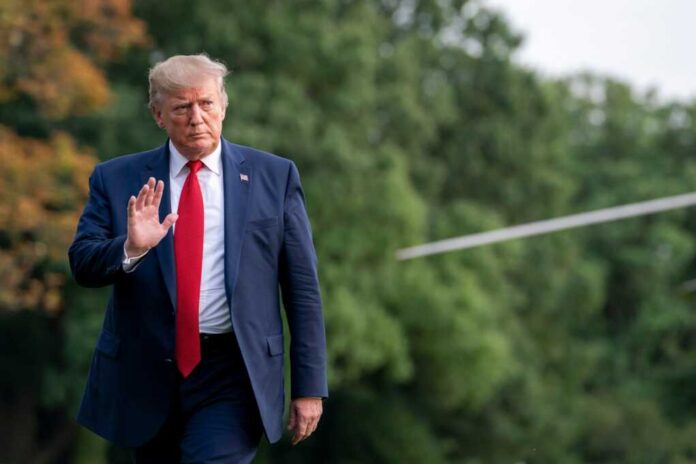
In a bold recalibration of international trade, President Trump puts the brakes on tariffs for 90 days, targeting customized agreements with 75 countries while escalating tensions with China.
At a Glance
- 90-day pause on tariffs for 75 countries who didn’t retaliate.
- Tariffs on Chinese goods hiked to 125%.
- Secretary Bessent notes sectoral tariffs remain.
- Market volatility influenced Trump’s decision.
- Major stock indexes surged following the announcement.
Trump’s Tactical Move
President Donald Trump recently announced a 90-day pause on tariffs impacting over 75 trading partners. These countries were spared the brunt of tariffs providing a strategic opening for the U.S. to negotiate tailored trade deals. Notably, this gesture does not extend to China, which immediately faced an increased tariff of 125%, a move Trump believes necessary to counter Beijing’s lack of respect on trade issues.
While this bold move is seen as a negotiation tactic, it highlights America’s eagerness to engage with countries ready to discuss trade barriers and mutual interests. Market conditions, particularly significant stock fluctuations, played a pivotal role in Trump’s decision. These stock market dip narratives were countered only by the rebound following the tariff pause announcement, a testament to the market’s sensitivity to trade dynamics.
China and Global Implications
The exclusion of China from this pause underscores tensions between the two economic powerhouses. Despite calls from allies and businesses, the administration keeps its tariffs on Chinese products, emphasizing the necessity of this aggressive stance against China’s alleged disrespectful trade policies. Treasury Secretary Scott Bessent reiterated that while Trump’s administration seeks to negotiate, tariffs on autos, steel, and aluminum remain in place and more sector-specific tariffs may be introduced.
“President Trump created maximum negotiating leverage for himself.” – Scott Bessent
Although some countries have quickly cooperated and sought negotiations, the outcome remains unclear for those not yet onboard. The European Union, in particular, appears poised to enact retaliatory duties of its own. This strategic halt in tariffs is designed to reel in nations with the promise of potential high tariffs while offering room for diplomatic maneuvering.
The Path Forward
In the coming months, the U.S. intends to engage in good faith negotiations with these countries, working towards customized trade solutions. These discussions will encompass issues like trade barriers, tariffs, currency manipulation, and non-monetary trade policies. Despite the chaos and confusion this tariff saga has created, Commerce Secretary Howard Lutnick stressed that the world, excluding China, is ready to work with Trump’s administration to resolve global trade discrepancies.
“The world is ready to work with President Trump to fix global trade, and China has chosen the opposite direction.” – Howard Lutnick
With over 75 countries seeking negotiations, the task of processing these trade agreements is not without its challenges. Moving ahead, the Trump administration demonstrates its intention to redefine trade norms, hopefully paving a path toward stable, balanced, and beneficial global trade relations.






















